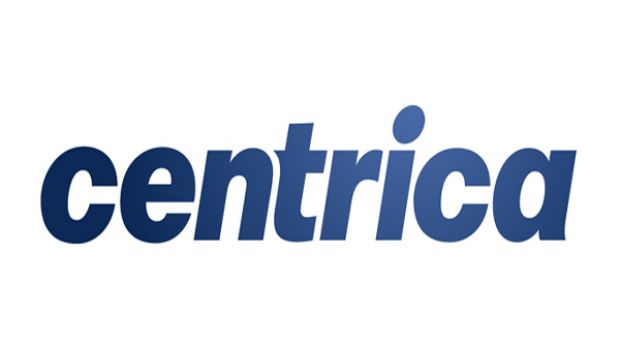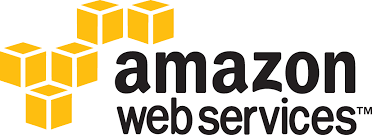Sorting
From A to Z
Deployments found: 1
The Challenge
With the acquisition of hardware and platform partner, AlertMe, in 2015, Centrica Connected Home was faced with the prospect of a significant shift in focus. Previously the relationship had been one of vendor-customer with AlertMe also pursuing it's own goals for expansion and licensing of its software. After the acquisition, Centrica Connected Home moved to quickly integrate the technical talent from the two companies and then to realign the development efforts of the teams. The new common goals of product evolution, feature enhancement and international launch, presented a number of challenges in the form of a rapid scaling requirement for their live platform, whilst maintaining stability and availability. Added to these demands on the company were an expansion into new markets, and brand new product launches, including smart boiler service and a growing ecosystem of new Hive smart home devices. They even found the time to develop deeply functional Alexa skills for their products and hence be a Smart Home Launch Partner for the Amazon Echo in the UK in 2016.
Why Amazon Web Services The entire end-to-end infrastructure on which the Hive Platform is based—including marketing and support websites, data collection services, and the real-time store for user and analytics data—runs on AWS technologies. The core technologies used to power Hive are Amazon Elastic Cloud Compute (Amazon EC2), Amazon Relational Database Service (Amazon RDS), and Amazon Simple Storage Service (Amazon S3). The new challenges meant they had to seek solutions in additional specialised, managed AWS services. Working with the AWS IoT Service Team under the EMEA IOT Lead for Amazon Web Services, Claudiu Pasa, they began a proof of concept project for migration from their existing device management platform to a specialised AWS IoT based service for new and existing devices. This deeper AWS integration enabled the replacement of other platform components with a leaner, faster Lambda based microservices infrastructure, with Amazon EC2 and Amazon RDS still playing a large part in their infrastructure for longer lived components such as data stores and platform UIs. Additional use of integrated AWS services such as Amazon S3 data storage and web hosting, Amazon API Gateway, Amazon Cognito and Amazon Cloudfront offer attractive benefits, when used in concert with more traditional infrastructure, such as lower latency to the customer, less scalability limitations and more resilience, allowing their engineering team to focus on systems that add value to the business such as advanced monitoring using AWS partner Wavefront, aggregated logging and application analysis using Amazon Elasticsearch Service, and cost analysis and attribution using resource tags and consolidated billing in Amazon Organisations.
The Benefits Centrica Connected Home is a great example of lean enterprise in action. Although it’s part of one of the UK’s biggest corporations, it operates in an agile way, learning quickly while delivering a cutting-edge product to hundreds of thousands of satisfied customers. “Our teams are empowered to make their own decisions and mistakes, and can pick up the tools and run with them, trying new things and innovating. AWS helps us to achieve this lean, agile infrastructure because it we can work flexibly and without constraint but within a consistent environment.”, says Adrian Heesom, COO Centrica Connected Home. Heesom continues, “Our ability to develop new features is much easier in our AWS environment. Plus, the AWS cloud delivers a consistently available hosting platform for our services. The ease of deploying resources in multiple physical AWS locations gives us confidence in the reliability of our environment.” Christopher Livermore, Centrica Connected Homes Head of Site Reliability Engineering says, "Leveraging managed, optimised services such as Amazon EC2, Amazon S3, AWS IoT, API Gateway, AWS Lambda, Amazon Cloudfront, Amazon RDS and Amazon Cognito allows our developers and engineers to focus on product delivery and its value to our customers. It abstracts away some of the common problems of operating system configuration and architecture design. It also makes it easier to maintain a good, common framework for product development across all our teams, internationally." Cost is a two-fold benefit for Centrica Connected Home. It can access a range of environments to experiment cost-effectively, while paying only for IT resources as they’re consumed. It’s a model that the team have adopted for its own products and related services.“More and more of our customers want to “pay as they go” for our Centrica Connected Home products and services,”Heesom says.“This not only aligns with the way we pay for AWS and make our finance model easier, but it enables us to focus even more resources on innovating our services further.”
With the acquisition of hardware and platform partner, AlertMe, in 2015, Centrica Connected Home was faced with the prospect of a significant shift in focus. Previously the relationship had been one of vendor-customer with AlertMe also pursuing it's own goals for expansion and licensing of its software. After the acquisition, Centrica Connected Home moved to quickly integrate the technical talent from the two companies and then to realign the development efforts of the teams. The new common goals of product evolution, feature enhancement and international launch, presented a number of challenges in the form of a rapid scaling requirement for their live platform, whilst maintaining stability and availability. Added to these demands on the company were an expansion into new markets, and brand new product launches, including smart boiler service and a growing ecosystem of new Hive smart home devices. They even found the time to develop deeply functional Alexa skills for their products and hence be a Smart Home Launch Partner for the Amazon Echo in the UK in 2016.
Why Amazon Web Services The entire end-to-end infrastructure on which the Hive Platform is based—including marketing and support websites, data collection services, and the real-time store for user and analytics data—runs on AWS technologies. The core technologies used to power Hive are Amazon Elastic Cloud Compute (Amazon EC2), Amazon Relational Database Service (Amazon RDS), and Amazon Simple Storage Service (Amazon S3). The new challenges meant they had to seek solutions in additional specialised, managed AWS services. Working with the AWS IoT Service Team under the EMEA IOT Lead for Amazon Web Services, Claudiu Pasa, they began a proof of concept project for migration from their existing device management platform to a specialised AWS IoT based service for new and existing devices. This deeper AWS integration enabled the replacement of other platform components with a leaner, faster Lambda based microservices infrastructure, with Amazon EC2 and Amazon RDS still playing a large part in their infrastructure for longer lived components such as data stores and platform UIs. Additional use of integrated AWS services such as Amazon S3 data storage and web hosting, Amazon API Gateway, Amazon Cognito and Amazon Cloudfront offer attractive benefits, when used in concert with more traditional infrastructure, such as lower latency to the customer, less scalability limitations and more resilience, allowing their engineering team to focus on systems that add value to the business such as advanced monitoring using AWS partner Wavefront, aggregated logging and application analysis using Amazon Elasticsearch Service, and cost analysis and attribution using resource tags and consolidated billing in Amazon Organisations.
The Benefits Centrica Connected Home is a great example of lean enterprise in action. Although it’s part of one of the UK’s biggest corporations, it operates in an agile way, learning quickly while delivering a cutting-edge product to hundreds of thousands of satisfied customers. “Our teams are empowered to make their own decisions and mistakes, and can pick up the tools and run with them, trying new things and innovating. AWS helps us to achieve this lean, agile infrastructure because it we can work flexibly and without constraint but within a consistent environment.”, says Adrian Heesom, COO Centrica Connected Home. Heesom continues, “Our ability to develop new features is much easier in our AWS environment. Plus, the AWS cloud delivers a consistently available hosting platform for our services. The ease of deploying resources in multiple physical AWS locations gives us confidence in the reliability of our environment.” Christopher Livermore, Centrica Connected Homes Head of Site Reliability Engineering says, "Leveraging managed, optimised services such as Amazon EC2, Amazon S3, AWS IoT, API Gateway, AWS Lambda, Amazon Cloudfront, Amazon RDS and Amazon Cognito allows our developers and engineers to focus on product delivery and its value to our customers. It abstracts away some of the common problems of operating system configuration and architecture design. It also makes it easier to maintain a good, common framework for product development across all our teams, internationally." Cost is a two-fold benefit for Centrica Connected Home. It can access a range of environments to experiment cost-effectively, while paying only for IT resources as they’re consumed. It’s a model that the team have adopted for its own products and related services.“More and more of our customers want to “pay as they go” for our Centrica Connected Home products and services,”Heesom says.“This not only aligns with the way we pay for AWS and make our finance model easier, but it enables us to focus even more resources on innovating our services further.”

